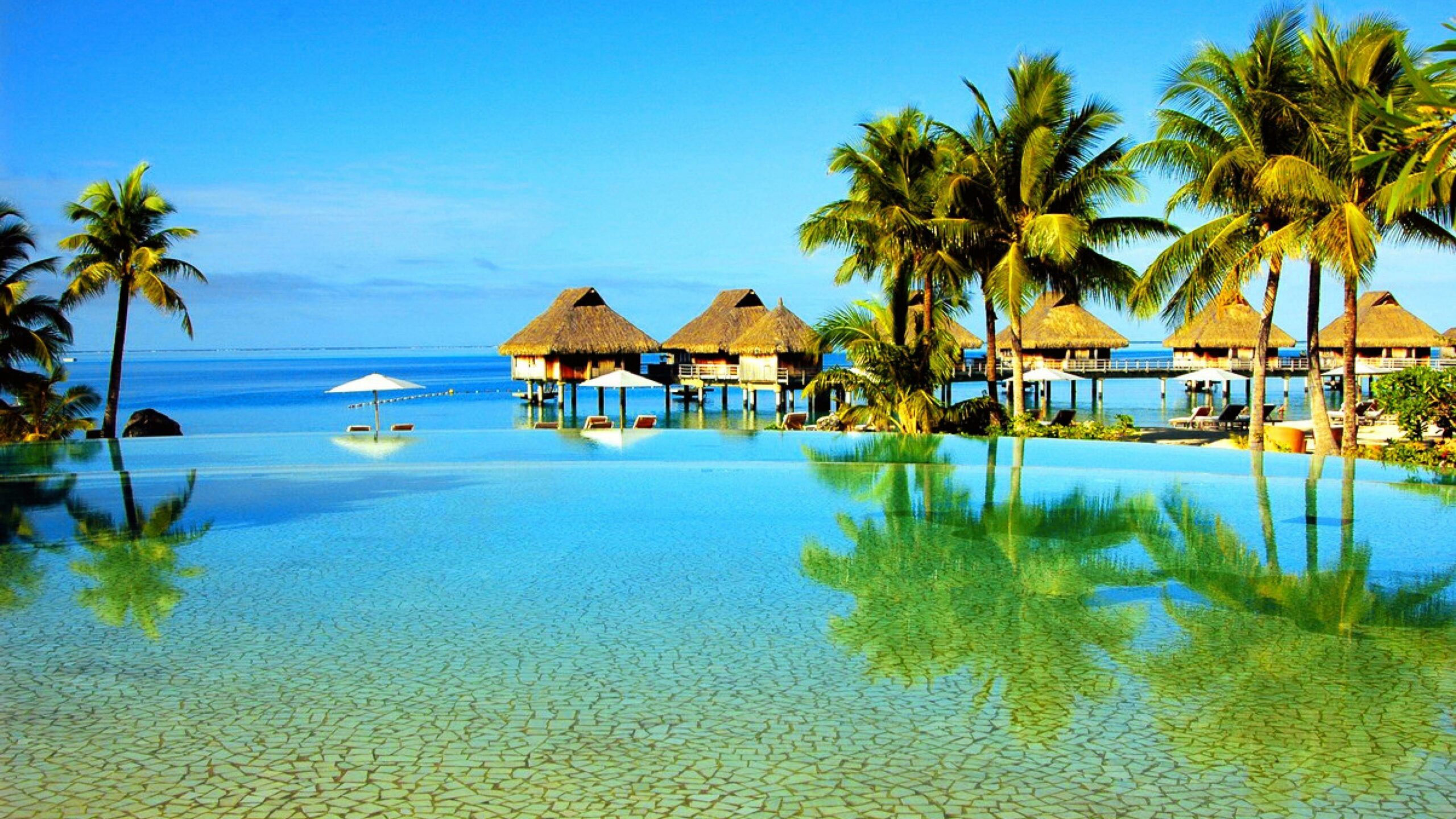Exotic places to vacation beckon with the promise of adventure and unparalleled experiences. This guide delves into the subjective nature of “exotic,” exploring diverse interpretations and showcasing highly sought-after destinations across the globe. We’ll examine the cultural richness, breathtaking landscapes, and unique activities that define these exceptional locations, providing practical tips for planning your dream trip while emphasizing responsible and sustainable travel practices. From the lush Amazon rainforest to the vast Sahara Desert, we uncover the secrets to unforgettable vacations.
We’ll cover everything from defining what constitutes an “exotic” location—considering factors like culture, accessibility, and unique landscapes—to crafting a sample itinerary and addressing potential challenges. We’ll also explore the importance of sustainable tourism and minimizing your environmental impact while enriching your cultural immersion. Prepare to be inspired to plan your own extraordinary journey to one of these captivating destinations.
Defining “Exotic”
The term “exotic” is inherently subjective, its meaning shaped by individual experiences, cultural backgrounds, and personal perspectives. What one person finds exotic, another might find commonplace. This inherent subjectivity makes defining “exotic” a fascinating and complex task, requiring an exploration of diverse interpretations and contributing factors.
Essentially, “exotic” describes something foreign, unusual, or strikingly different from one’s own familiar experiences. It often evokes a sense of allure, mystery, and perhaps even a touch of the unfamiliar. This perception is significantly influenced by the individual’s frame of reference and exposure to diverse cultures and environments.
Examples of Exotic Locations
Many locations around the world are commonly considered exotic, often categorized by their geographical region. These locations possess a combination of unique cultural practices, breathtaking landscapes, and often limited accessibility, contributing to their exotic appeal.
For instance, the Amazon rainforest in South America, with its dense jungle, diverse wildlife, and indigenous cultures, is frequently cited as an exotic destination. Similarly, the Sahara Desert in Africa, with its vast expanse of sand dunes and unique nomadic cultures, offers a starkly different yet equally captivating exotic experience. In Asia, the remote Himalayan mountain regions, with their stunning peaks and unique Sherpa culture, present another example of an exotic locale. The islands of Southeast Asia, such as Bali and the Philippines, are often described as exotic due to their unique blend of vibrant cultures, beautiful beaches, and lush landscapes. Finally, Antarctica, with its frozen landscapes and unique wildlife, is considered exotic due to its remoteness and extreme climate.
Factors Contributing to a Location’s Exotic Perception
Several factors contribute to a location being perceived as exotic. Culture plays a significant role, with unique traditions, customs, and languages adding to the sense of otherness and intrigue. Landscape also plays a vital part; dramatic natural features such as towering mountains, vast deserts, or dense jungles can evoke a sense of wonder and the unfamiliar. Finally, accessibility is a crucial factor; locations that are difficult to reach, requiring significant travel time or effort, often enhance their exotic appeal, as the journey itself becomes part of the experience. The sense of remoteness and the challenge of getting there adds to the allure.
Comparative Definitions of “Exotic”
| Definition | Examples | Geographic Location | Contributing Factors |
|---|---|---|---|
| Something strikingly different from one’s own familiar experience. | Amazon Rainforest, Sahara Desert | South America, Africa | Unique landscape, diverse wildlife, remote location |
| A place with unique and captivating cultural practices. | Himalayan mountain regions, Bali | Asia | Unique traditions, distinct languages, spiritual significance |
| A destination requiring significant travel and effort to reach. | Antarctica, remote islands in the Pacific | Antarctica, Pacific Ocean | Limited accessibility, remoteness, challenging journey |
| A location possessing a blend of unique cultural and natural features. | Machu Picchu, Petra | South America, Jordan | Ancient ruins, stunning landscapes, unique historical significance |
Planning an Exotic Vacation
Embarking on an exotic vacation requires meticulous planning to ensure a seamless and memorable experience. Careful consideration of various factors, from itinerary design to budget allocation and potential challenges, is crucial for a successful trip. This section provides a practical framework for planning your dream exotic getaway.
Sample Ten-Day Exotic Vacation Itinerary: Exploring Bali
This itinerary focuses on a ten-day trip to Bali, Indonesia, showcasing a blend of cultural immersion, relaxation, and adventure. Adjustments can be made to suit individual preferences and interests.
Day 1-3: Ubud Cultural Immersion
Accommodation: A traditional Balinese guesthouse in Ubud. Activities include exploring the Tegalalang Rice Terraces, visiting the Sacred Monkey Forest Sanctuary, attending a traditional Balinese dance performance, and taking a cooking class.
Day 4-6: Seminyak Beach Relaxation
Accommodation: A beachfront hotel in Seminyak. Activities include relaxing on the beach, surfing lessons, indulging in spa treatments, and exploring the vibrant Seminyak nightlife.
Day 7-8: Nusa Islands Adventure
Accommodation: A bungalow on Nusa Lembongan or Nusa Ceningan. Activities include snorkeling or diving in crystal-clear waters, exploring hidden beaches, and enjoying stunning sunsets.
Day 9-10: Return to Ubud and Departure
Accommodation: Return to Ubud for a final night. Activities include souvenir shopping, a final Balinese massage, and preparing for departure.
Practical Tips for Planning and Budgeting an Exotic Trip
Thorough planning and budgeting are essential for managing the financial aspects of an exotic vacation. This includes researching flight and accommodation costs, estimating daily expenses, and accounting for unforeseen circumstances.
Start by creating a detailed budget that encompasses all anticipated expenses, including flights, accommodation, activities, food, transportation, visas, travel insurance, and spending money. Utilize online travel agencies and comparison websites to find the best deals on flights and accommodation. Consider booking flights and accommodation well in advance, especially during peak season, to secure better prices. Allocate a contingency fund to cover unexpected expenses or emergencies. For example, budgeting $100 per day for food and activities in a mid-range destination is a reasonable starting point, but this can vary greatly depending on location and lifestyle.
Potential Challenges and Solutions
Exotic vacations may present unique challenges, such as language barriers, visa requirements, and health concerns. Proactive planning can mitigate these risks.
Language barriers can be overcome by learning basic phrases in the local language or using translation apps. Visa requirements should be checked well in advance of travel, and applications submitted accordingly. Consult your doctor about necessary vaccinations and health precautions for your destination. Pack appropriate clothing and gear for the climate and planned activities. Research local customs and traditions to avoid unintentional cultural faux pas. For example, if traveling to a country with a different alphabet, downloading a translation app is crucial for navigating signs and menus.
Step-by-Step Guide to Booking Flights and Accommodations
Booking flights and accommodations can be streamlined by following a systematic approach.
Step 1: Research and Comparison: Use online travel agencies (OTAs) like Expedia, Booking.com, Kayak, etc., to compare prices and options for flights and accommodations. Consider factors such as flight duration, layover times, and hotel amenities. Step 2: Booking Flights: Once you’ve found suitable flights, book directly through the airline’s website or a reputable OTA to secure your reservation. Step 3: Booking Accommodation: Similarly, book your accommodation through a reputable OTA or directly with the hotel. Read reviews and check cancellation policies before making a reservation. Step 4: Confirmation and Documentation: Print or save digital copies of your flight and accommodation confirmations, as well as any other relevant travel documents (visas, travel insurance).
Visual Representations of Exotic Locations
The visual appeal of exotic locations is a powerful draw for travelers, offering a sensory experience far removed from the everyday. These destinations captivate with their unique landscapes, vibrant ecosystems, and breathtaking natural phenomena. The following sections will delve into the visual richness of several iconic exotic locations.
The Amazon Rainforest: A Symphony of Green
The Amazon rainforest presents a visual spectacle of unparalleled biodiversity. Towering emerald canopies stretch as far as the eye can see, punctuated by the vibrant colors of countless flora and fauna. The dense vegetation creates a tapestry of varying shades of green, from the deep, shadowy hues of the forest floor to the bright, luminous greens of the upper canopy. Sunlight filters through the leaves, creating dappled patterns on the forest floor, illuminating the intricate details of the undergrowth. The air itself seems alive with the vibrant colors of exotic birds, their plumage flashing brilliantly against the green backdrop. Giant water lilies, with their immense, round leaves and delicate blossoms, dot the surface of the slow-moving rivers. Monkeys swing effortlessly through the trees, their fur blending seamlessly with the foliage. The visual complexity and sheer abundance of life create a breathtaking and unforgettable experience.
The Sahara Desert: A Tapestry of Earth Tones
The Sahara Desert, the world’s largest hot desert, offers a starkly contrasting visual experience. Vast expanses of sand stretch to the horizon, their color shifting from pale gold in the morning sun to deep orange and crimson hues at sunset. Giant sand dunes, sculpted by the wind into breathtaking shapes, rise and fall like waves across the landscape. The contrasting colors of the sand against the clear, azure sky create a dramatic and awe-inspiring vista. Occasionally, rocky outcrops break the monotony of the sand, offering a different texture and color palette. The play of light and shadow on the dunes throughout the day creates a constantly shifting visual spectacle. The night sky, unpolluted by city lights, reveals a breathtaking display of stars, adding another layer to the desert’s visual allure.
The Great Barrier Reef: An Underwater Kaleidoscope
The Great Barrier Reef, the world’s largest coral reef system, is a visual feast for the eyes, even without diving beneath the surface. From above, the vibrant turquoise waters contrast sharply with the darker blues of the deeper ocean, hinting at the vibrant life teeming below. Submerged, the reef explodes with color and life. Corals in every imaginable shade – from deep reds and oranges to vibrant yellows and blues – form intricate patterns and structures. Schools of brightly colored fish dart through the coral branches, adding further movement and vibrancy to the scene. Giant clams, with their iridescent shells, rest peacefully on the ocean floor. Sea turtles gracefully glide through the water, their ancient forms adding a touch of serenity to the scene. The sheer diversity of life and color creates an underwater paradise that captivates the senses.
The Northern Lights: A Celestial Dance of Light
The Northern Lights, or Aurora Borealis, are a celestial spectacle of unparalleled beauty. Across the dark, night sky, curtains of shimmering light dance and swirl, their colors shifting and changing constantly. Green is the most common color, but shades of red, blue, violet, and even pink can appear, creating a breathtaking display of color and movement. The patterns are unpredictable, with some nights showing flowing curtains of light, while others display more sporadic bursts of energy. The intensity of the lights varies, with some displays being subtle and others being so bright they illuminate the landscape below. The atmospheric conditions, such as cloud cover and solar activity, influence the visibility and intensity of the Aurora, making each sighting unique and unforgettable.
Last Point
Ultimately, planning an exotic vacation is about more than just ticking off destinations on a bucket list; it’s about embracing new cultures, challenging yourself, and creating lasting memories. By carefully considering the practical aspects of planning, prioritizing sustainable practices, and immersing yourself in the unique experiences each location offers, you can embark on a truly transformative journey. Remember to respect local cultures, minimize your environmental footprint, and support local communities— ensuring that these exotic wonders remain vibrant and accessible for generations to come. So, start dreaming, start planning, and start your adventure!




